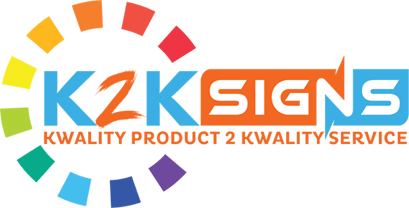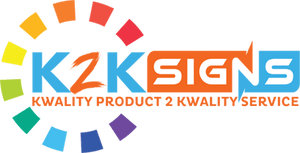HOW TO AVOID THESE COMMON SAFETY SIGN MISTAKES

The purpose of safety signs is to meaningfully communicate important safety information. These are visual tools to highlight hazards and actions that need to be taken to avoid them. The signs are only effective when some common mistakes can be avoided.
4 Common Safety Sign Mistakes and the Solutions
WRONG PLACE OR LOCATION
Safety signs when put in the wrong place is ineffective. Wrong locations make signs difficult to see, read and understand. Some instances of wrongly placed signs are:
- When a sign is placed too high, a person cannot associate it with the mentioned hazard. As a result, they ignore it when they cannot see the hazard.
- A person may already be in danger even before they can see the warning and understand it when a sign is placed too close to the intended hazard or danger.
The solution to these issues is to put the safety signs in the correct places so that they pass on the message correctly. Some of the solutions are:
- Placing signs at the correct viewing distance. A five-foot distance is recommended. This depends on the intensity of the danger or hazard.
- Placing signs at the correct viewing distance. A five-foot distance is recommended. This depends on the intensity of the danger or hazard.
- There should not be any obstruction in front of the sign. It should be clearly visible from a normal point of approach.
- There should be good lighting conditions for proper sign visibility. If there is low light, it is best to use reflective signs.
VAGUE AND UNCLEAR MESSAGE
Too much or too few texts or even unrelated images give an unclear and confusing message. Different people may perceive the messages differently to what is intended. Some examples of this scenario are:
- People who do not understand English end up having trouble understanding the hazard when there is no image or there is a wrong image in the sign.
- A worker may not understand the nature of the hazard and so cannot take the necessary precautions and correct actions.
The solution is to create ideal safety signs that are concise and precisely state the nature of the hazard. It should impart an effective message giving essential information that can be understood by all. Some examples of this are:
- Well-designed signs that have proper layouts. Specific colours stating hazard intensity and proper font sizes that are visible from far.
- Using proper words that clearly states the hazard source and action to be taken to avoid it. No jargon should be used.
- Signs should have appropriate communicative images explaining the nature of the hazard or danger.
TOO MANY SIGNS TOGETHER
When there are too many safety signs placed together at one location, it creates confusion. Since different signs communicate different safety messages, a person fails to understand the intended message clearly. The purpose of putting the signs is unfulfilled as the visual communication is not clear. Some instances of this mistake are:
- Most people ignore the warnings and messages as there are too many signs. They do not waste time as they do not find it relevant.
- Factory workers cannot comprehend the exact nature of the warning and what course of action they should take. This makes them vulnerable to dangers.
The solution for this is to keep the signs in groups divided based on their purpose, meaning or function. For example, certain places like plants and industries will need a multitude of safety signs as these places have several hazards and danger zones. Signs should be put judiciously in these places. Essential hazards, warnings and danger signs should be prioritised and placed first.
- Combining signs that comprehensively states the hazard or risk.
- Leaving a good amount of space between signs so that messages are clear.
- Putting up a customised board for signs to convey safety messages.
NO MAINTENANCE
The lack of maintenance of safety signs compromises the purpose of putting them out. Due to this, signs become outdated, covered with dust, faded, corroded, broken or obstructed. Some issues associated with this are:
- Outdated signs can put people in danger, for example, electricians. They may not have updated information on equipment, voltage and other danger.
- People get no information or inaccurate information.
- Creates confusion as signs become difficult to read and understand.
Proper maintenance is the only solution to this issue be it in a workplace or anywhere else. Some things that must be done to ensure this are:
- Replacement of all old signs that are worn out.
- Reinstalling new signs with updated information.
- Moving any obstruction or the sign to a better location.
These are some common safety signs mistakes that must be identified and resolved. These mistakes may not seem like a big deal but they do make a difference in reducing accidents and improving safety.

